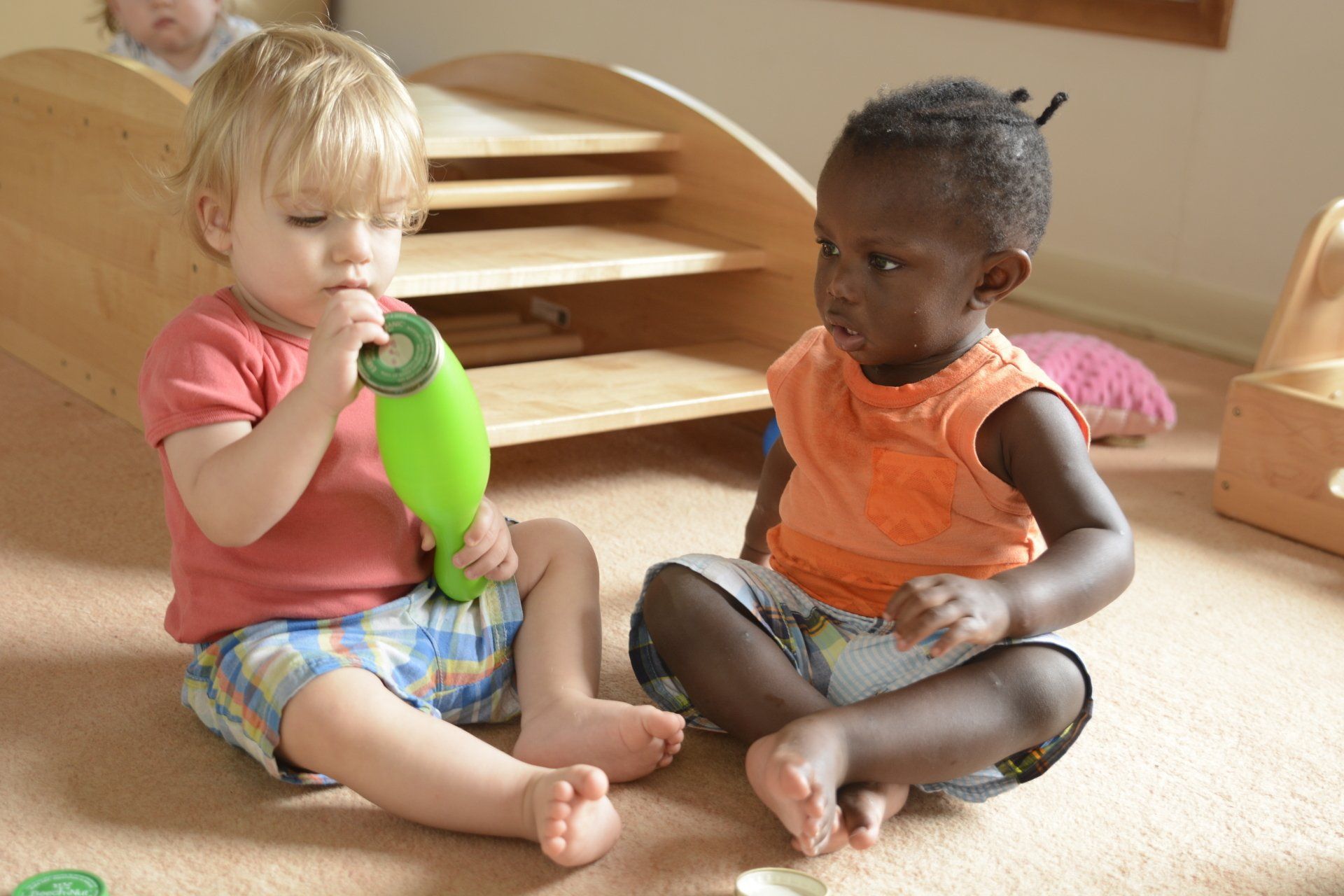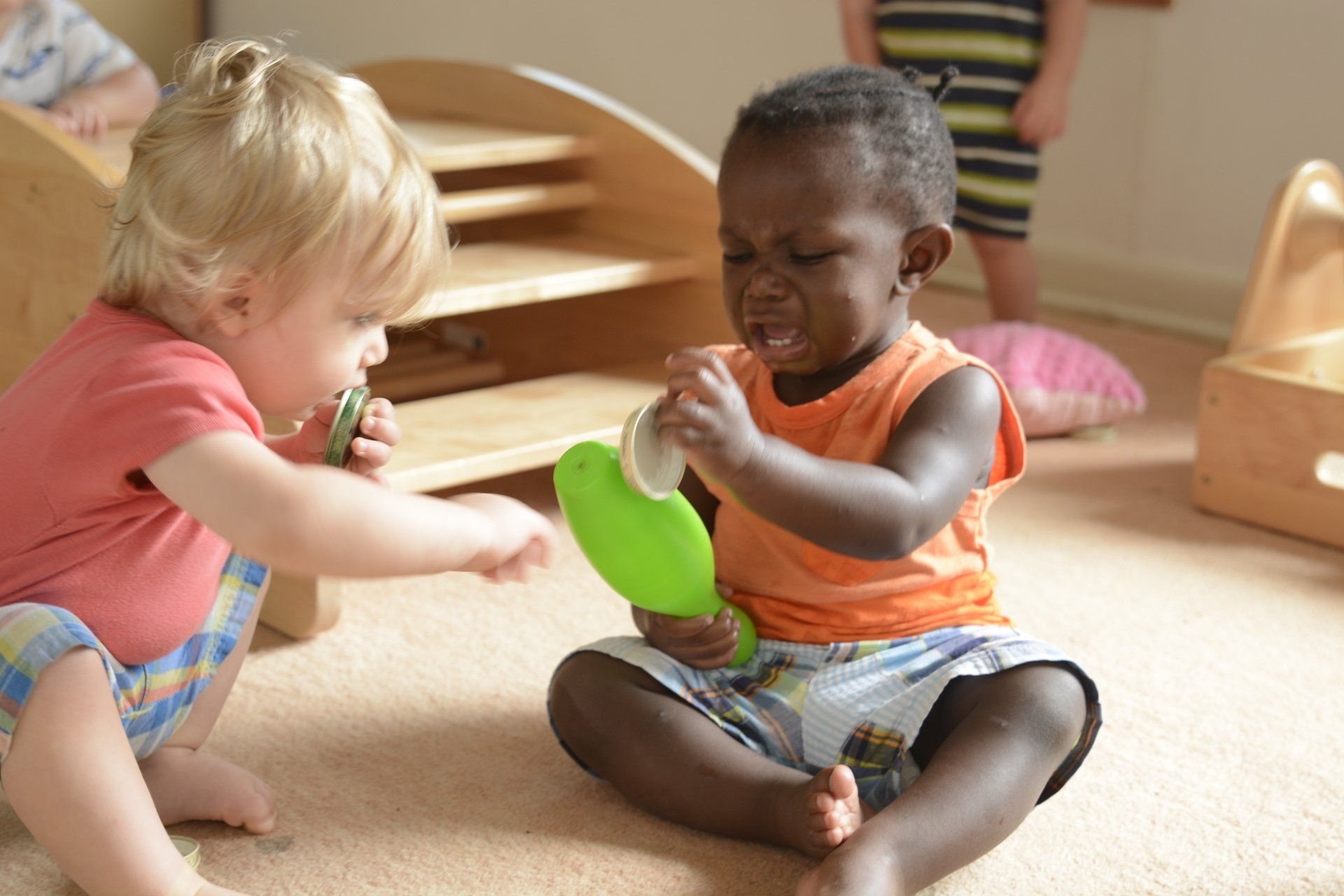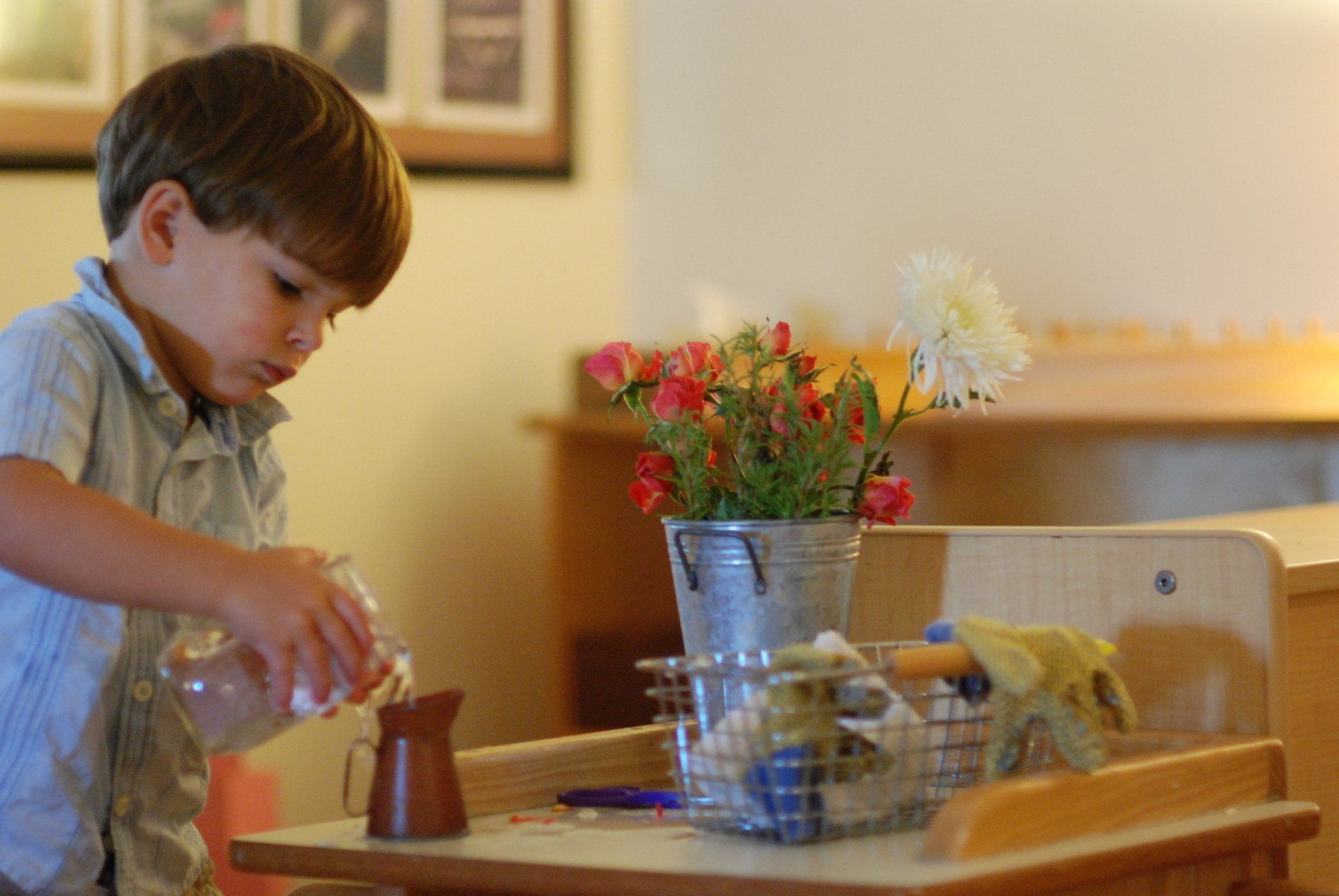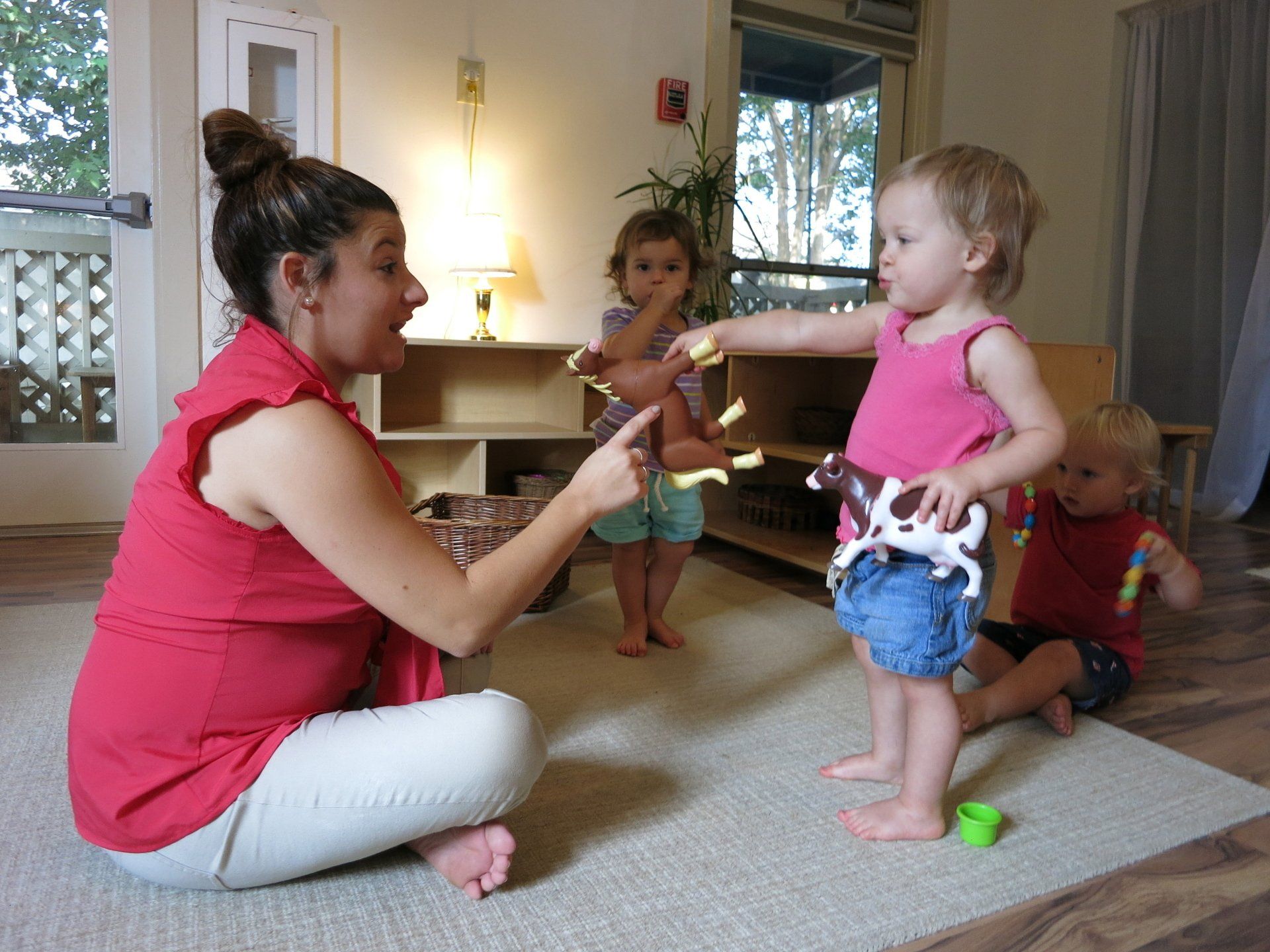Infant Peer Learning- Five Essential Elements

When it comes to the research on peer learning, we don’t often think of infants. However, groups of young children together in a trusting environment demonstrate the earliest stages of this concept.
Oftentimes, group providers miss these subtle learning interactions as we balance individual child physical care needs, governing regulatory obligations and parental requests and concerns. How can we trust that the child is learning without adult intervention?
In peer learning, students will engage themselves intellectually, emotionally and socially in “constructive conversation” and learn by talking and questioning each other’s views and reaching consensus or dissent (Boud, 2001).
Here we observe a child struggling to place the lid on the bottom of a bowling pin. He’s noticed the similar circles of the two objects, but he’s become frustrated in trying to put the two together.

Sensitive to his friend’s distress, an infant moves close by with a lid of his own.
The first child relaxes almost immediately and offers the bowling pin to his peer. Their toes connect as one takes the pin in hand and the other lets go.
Holding the pin upright, the infant demonstrates what he has learned about lid positioning and balance while the first child looks on.

Yet, peer learning does not occur spontaneously. It requires planning, appreciation, and trusting the children to be self-learners. At the center, we’ve developed five essential elements to encourage infant peer learning.
Five Essential Elements to Encourage Infant Peer Learning in Group Care
- Continuity of Care – Many recognize the value of Primary Care in group situation involving one adult primarily taking care of a small group’s physical and emotional needs. When it comes to being with babies, many hands do not make for light work. Rather, it’s the secure competent hands of a trusted adult. Continuity of Care takes this commitment a step further by ensuring that the relationships amongst this primary provider AND the relationship amongst the small group of babies under her care remain together over time. In a nutshell, children of like age and/or development stay together and transition together with their trusted adult for at least one or two years. There’s no graduating to the “creeper room” unless the group transitions together.
- Physical and Emotional Needs Met – Primary Caregiving helps ensure that a child’s physical and emotional needs are met by encouraging one adult to build a long-standing and trusting relationship with a small group of children. During physical care, the adult is fully present with each individual child- giving the baby all the time he needs to be satisfied physically and emotionally. No other task at hand exists. As a result, when the child is outside physical care, she “wants nothing” and is free to explore and interact with her environment and peers.
- Prepared Environment – The environment itself must be prepared to be physically safe, cognitively challenging, and emotionally nurturing with consistent and clearly defined limits and expectations to develop discipline. Appreciating the value self-directed play and learning, the adult is free to observe, set safety expectations, and prepare the environment for continued child development. The child is the curriculum and the lesson found in the environment.
- Time for Uninterrupted Play – It’s not enough to simply allow for time to freely move, play and interact with the environment. Babies need this time to be uninterrupted. Interruptions in group care take many forms: photos for documentation, lesson plans, doors opening/closing as adults enter or leave the space, adults walking though the play space, tours and observers involving those outside the center community, and more…
and, of course-
- Freedom to Explore and Interact with Other Infants – How close do you allow babies to come together in play without moving proximal and, thus, interfering with what may transpire. Do you allow them to pass toys? Can they crawl over each other? Can they mouth an item and then place it down? Knowing if, when, and how to intercede is a dance. Sometimes even the simple act of observing can distract an infant’s exploration when the adult enters her space.
Although important, being with babies is so much more than feeding, diapering, sleeping and reading stories. Being with Babies is about encouraging the next generation to enjoy, discover, and collaborate in peace with each other. We sometimes forget that given the pay and regard for childcare providers that it all starts here. Fortunately, we have the assistance from each other, from involved parents, and from our littlest ones in seeing this task successfully though.
Resources:
3 hour Video Training supporting Frontline Caregivers
You might also like



CHILDCARE PROGRAMS
ADULT EDUCATION
QUICK LINKS
Little Learners Lodge
